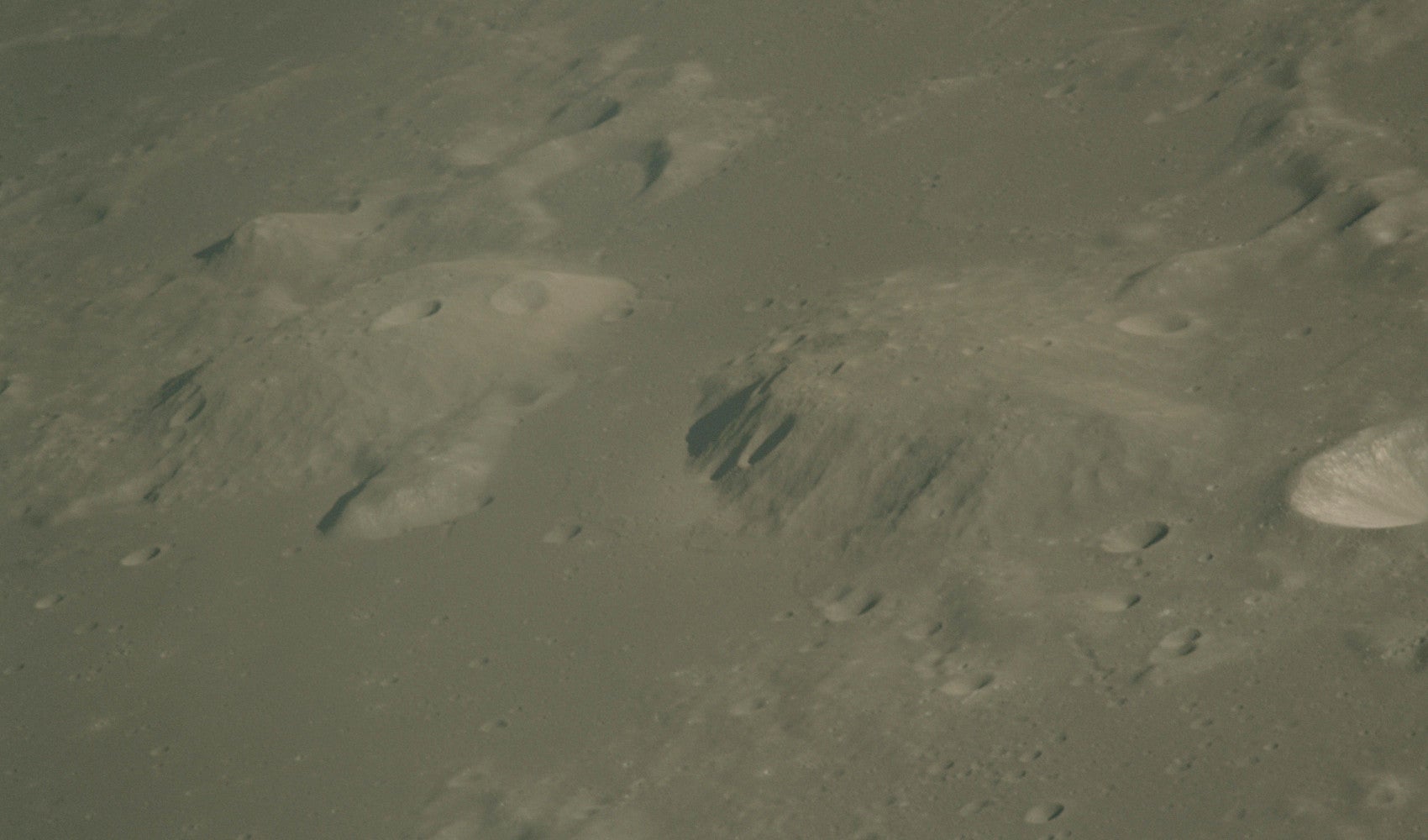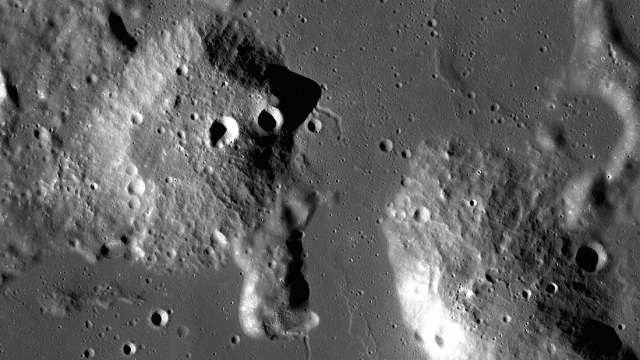NASA’s Artemis program seeks to return humans to the Moon later this decade, but a pair of related side projects promises to deliver some fascinating new science that could expand our understanding of lunar geology and human biology.
At the northeast border of the Moon’s Oceanus Procellarum region are three very strange bumps known as the Gruithuisen Domes. The unusually rounded mountains stick out from the otherwise flat topography, save for the nearby crater for which they are named. The largest of the three domes, Mons Gruithuisen Gamma, stretches 20 kilometres across and rises to 1,500 metres in height.

The Gruithuisen Domes are oddities from a geological perspective, as they formed from processes that aren’t yet fully understood. Scientists will finally have the opportunity to study these giant mounds in detail, as NASA has chosen to send a newly announced suite of scientific instruments to the region later this decade. The space agency has also approved a second study to test the effects of space on yeast. Together, the two projects will address key scientific questions about our Moon, as Joel Kearns, deputy associate administrator for exploration in NASA’s Science Mission Directorate, explained in an agency statement.
“The first will study geologic processes of early planetary bodies that are preserved on the Moon, by investigating a rare form of lunar volcanism,” Kearns said. “The second will study the effects of the Moon’s low gravity and radiation environment on yeast, a model organism used to understand DNA damage response and repair.”
Both were chosen as part of NASA’s Payloads and Research Investigations on the Surface of the Moon (PRISM) program, and both will be delivered to the lunar surface by vendors taking part in the agency’s Commercial Lunar Payload Services (CLPS) initiative — a key component of the Artemis program. The CLPS missions, of which there are now seven, are meant to further enable human missions to the Moon.
The science instruments being sent to the Gruithuisen Domes are collectively known as the Lunar Vulkan Imaging and Spectroscopy Explorer (Lunar-VISE). The leader of this payload suite is planetary geologist Kerri Donaldson Hanna from the University of Central Florida. Of the five different instruments in this suite, two will be attached to a stationary lander, while the remaining three will be placed on a mobile rover. Both the lander and the rover will be sourced from a CLPS vendor, with NASA targeting 2026 for the lunar mission.

Once on Moon, the rover will attempt to ascend to and investigate the summit of one Gruithuisen Dome. NASA explains the strangeness of these features thusly:
Based on early telescopic and spacecraft observations, these domes have long been suspected to be formed by a magma rich in silica, similar in composition to granite. Observations from the Lunar Reconnaissance Orbiter (LRO) confirmed that the Gruithuisen Domes are distinct from the surrounding terrain, which is covered by ancient hardened basaltic lava flows. Basaltic lavas are runny and thin and flow sort of like motor oil – as opposed to silicic lavas, which are thick, and flow more like peanut butter. The Gruithuisen Domes were formed by eruptions of silicic lavas, which didn’t flow outward easily, creating domes.
As to how silica-rich magmas were able to form on the Moon, that’s an open question, especially given that, on Earth, these features form in the presence of water and plate tectonics — both of which are very rare on the Moon. It’s hoped that Lunar-VISE, with its onboard sampling capabilities, will shed some new light onto this mystery.
The second of the two newly announced science suites is called Lunar Explorer Instrument for space biology Applications (LEIA), and it’s being led by Andrew Settles of NASA’s Ames Research Centre in California. For this mission, a small CubeSat-based device will deliver some yeast to the lunar surface, specifically a sampling of Saccharomyces cerevisiae, also known as brewer’s yeast. This yeast is important to scientists who study human biology, as it’s a good model for studying genetics and the processes behind cellular replication, division, and repair.
Here, the scientists are hoping to study DNA damage, among other biological factors, as the result of space radiation and partial gravity. Indeed, the lunar environment, unlike the International Space Station, is far beyond the protective shield of the Earth’s magnetosphere, making it an ideal place to study such things. If we’re going to send humans to the Moon for prolonged stays (or Mars for that matter), we need to have a good handle on the biological risks. LEIA should help in this regard.
The upcoming Artemis missions, which seek to land a man and woman on the Moon no earlier than 2025, will be exciting, no doubt. But these side missions are also going to be pretty neat. One that I’m looking forward to is VIPER, or Volatiles Investigating Polar Exploration Rover, in which a four-wheeled rover will explore the Moon’s south polar regions for signs of lunar water. The 100-day mission is currently scheduled to start in late 2023.
